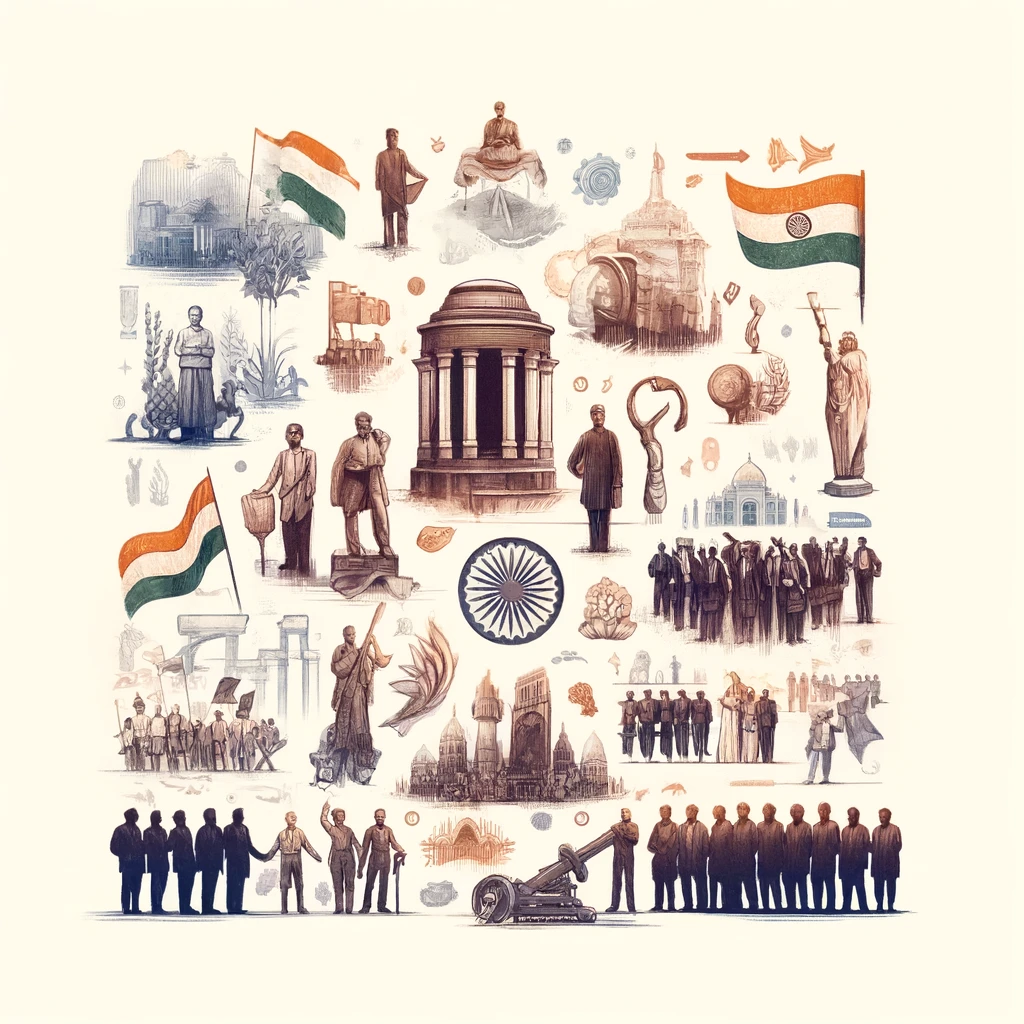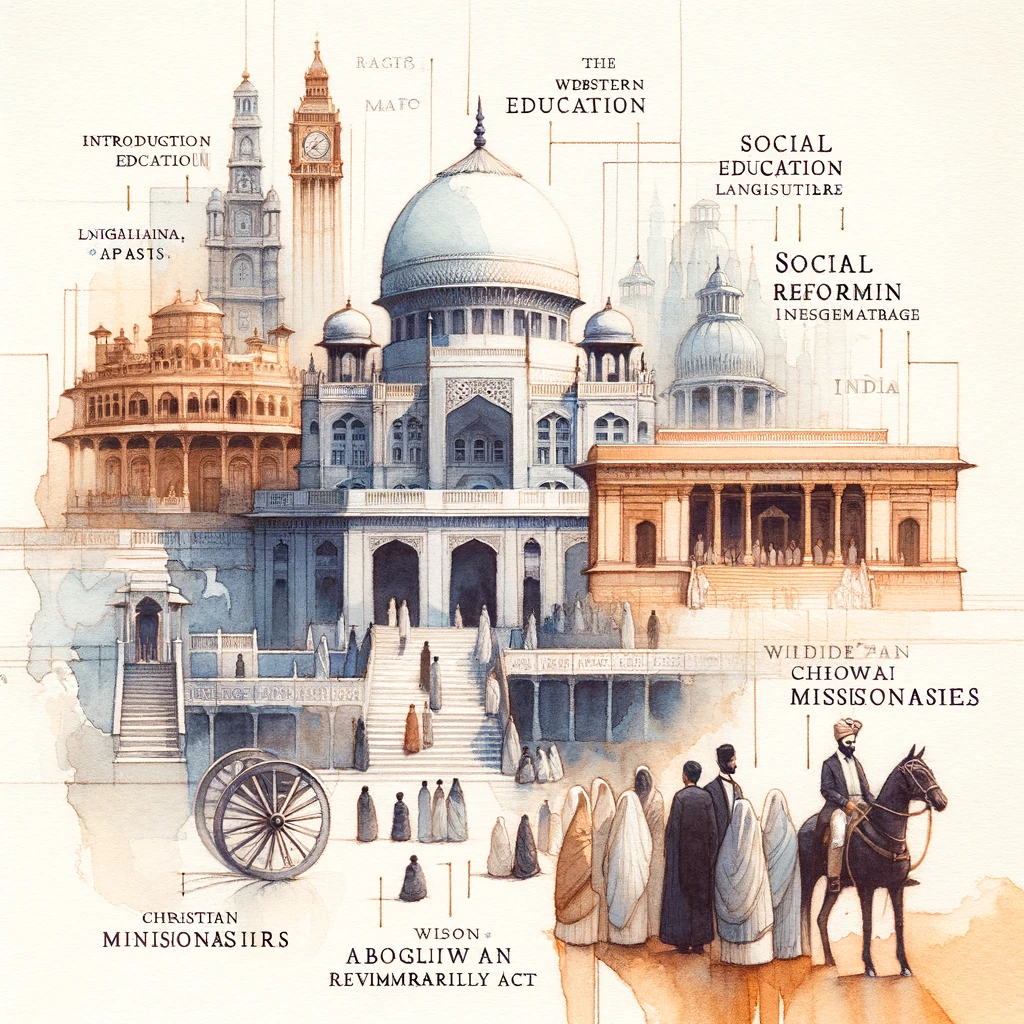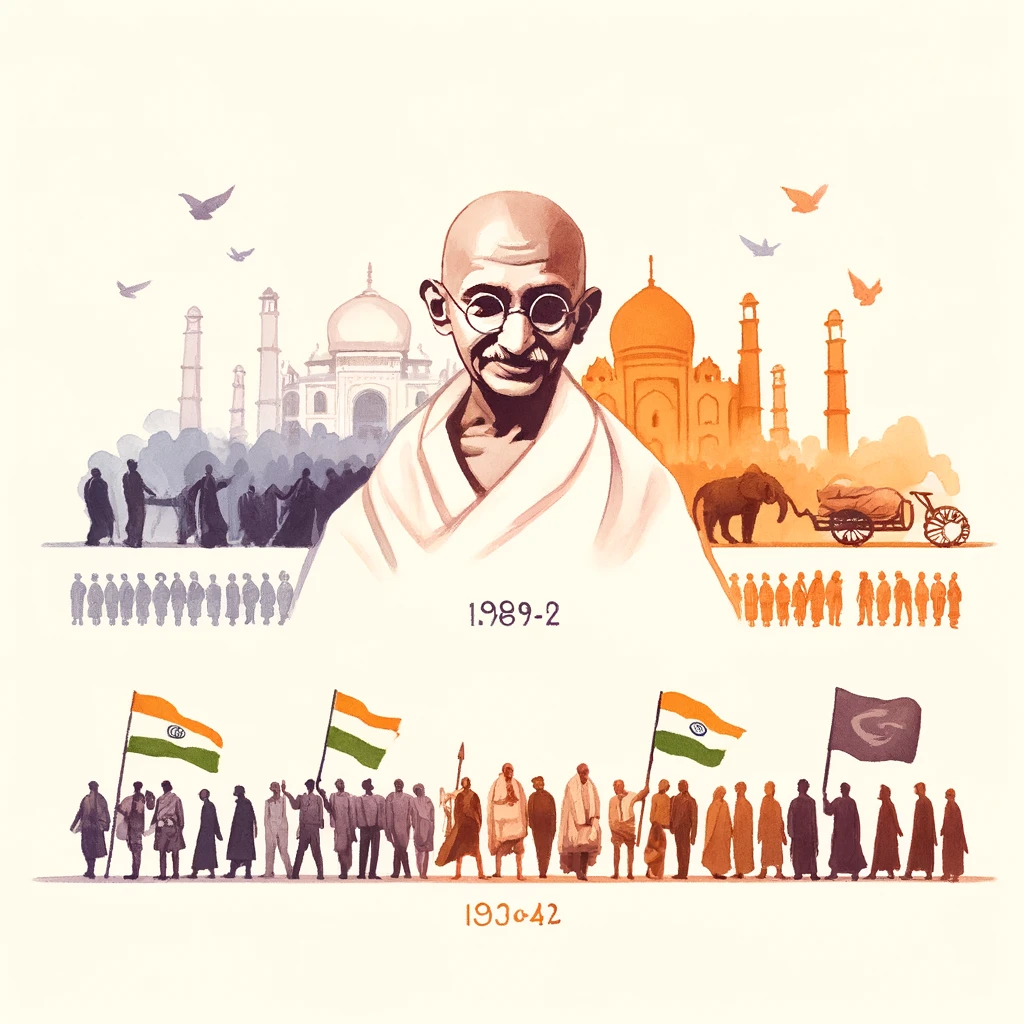Early Nationalist Movements (1858-1918)
The early phase of Indian nationalism laid the groundwork for the subsequent struggle for independence. During this period, various movements and organizations emerged, leading to the establishment of the Indian National Congress and significant movements like the Swadeshi Movement and the Home Rule Movement.

Formation of Indian National Congress in 1885
Background
- The dissatisfaction with British rule and the desire for political participation among educated Indians led to the formation of the Indian National Congress (INC) in 1885.
- The idea of forming a national organization was proposed by A.O. Hume, a retired British civil servant, to create a platform for dialogue between the British government and Indian leaders.
Objectives
- The primary objectives of the INC were to promote political education, foster unity among Indians, and articulate Indian grievances to the British authorities.
- The Congress aimed to secure a greater share of Indians in government and administration.
First Session
- The first session of the INC was held in Bombay (now Mumbai) in December 1885, attended by 72 delegates from different parts of India.
- The early sessions of Congress focused on issues like civil rights, administrative reforms, and representation of Indians in legislative councils.
Significance
- The formation of the INC marked the beginning of an organized national movement. It provided a structured platform for discussing and addressing political and social issues affecting India.
- The INC played a crucial role in mobilizing public opinion and fostering a sense of national unity among diverse Indian communities.
Swadeshi Movement and Boycott of British Goods
Background
- The Swadeshi Movement emerged as a response to the partition of Bengal in 1905 by Lord Curzon. The partition was seen as an attempt to divide and rule by creating religious divisions between Hindus and Muslims.
- The movement aimed to promote Indian goods and boycott British products to assert economic independence and national pride.
Key Features
- The Swadeshi Movement called for the boycott of British goods and the promotion of indigenous industries.
- People were encouraged to use hand-spun and hand-woven textiles (Khadi) and support Indian enterprises.
- The movement also emphasized the importance of self-reliance and the revival of traditional crafts and industries.
Major Leaders
- Prominent leaders of the Swadeshi Movement included Bal Gangadhar Tilak, Bipin Chandra Pal, Lala Lajpat Rai, and Aurobindo Ghose.
- The movement saw widespread participation from students, women, and the rural population.
Methods
- Boycott of British goods, institutions, and services.
- Organization of bonfires to burn foreign goods.
- Establishment of Swadeshi enterprises like textile mills, handloom weaving centers, and national schools and colleges.
Impact
- The Swadeshi Movement had a significant impact on the Indian economy and society. It boosted indigenous industries and instilled a sense of national pride and unity.
- It also led to the growth of Indian nationalism and set the stage for future mass movements against British rule.
Home Rule Movement by Bal Gangadhar Tilak and Annie Besant
Background
- The Home Rule Movement was inspired by the Irish Home Rule Movement and aimed at achieving self-government within the British Empire.
- It was launched by Bal Gangadhar Tilak and Annie Besant in 1916. This movement revived the national spirit and demanded greater political rights for Indians.
Objectives
- The main objective was to attain self-governance (Swaraj) and self-determination for India.
- The movement sought to mobilize public opinion and create a demand for constitutional reforms.
Key Activities
- Both Tilak and Besant established Home Rule Leagues to propagate their ideas and garner support.
- Tilak’s league operated mainly in Maharashtra and Karnataka, while Besant’s league was active in Madras (now Chennai) and other parts of South India.
Methods
- Public meetings, lectures, and distribution of pamphlets to educate people about the need for Home Rule.
- Establishment of local branches of the Home Rule League across India.
- Engagement with the press to spread the message and rally support.
Impact
- The Home Rule Movement succeeded in bringing the demand for self-government to the forefront of Indian politics.
- It generated widespread enthusiasm and involvement among the Indian population, including the youth and women.
- The British government, in response, made some concessions, including the Montagu-Chelmsford Reforms of 1919, which aimed at increasing Indian participation in governance.
Conclusion
The early nationalist movements between 1858 and 1918 laid the foundational framework for India’s struggle for independence. The formation of the Indian National Congress, the Swadeshi Movement, and the Home Rule Movement were pivotal in mobilizing Indian society, fostering a sense of national unity, and articulating the demand for self-governance. These movements set the stage for the more intense and widespread nationalist activities that followed in the subsequent decades. Understanding these early efforts is crucial for comprehending the evolution of the Indian freedom struggle and the eventual attainment of independence.


